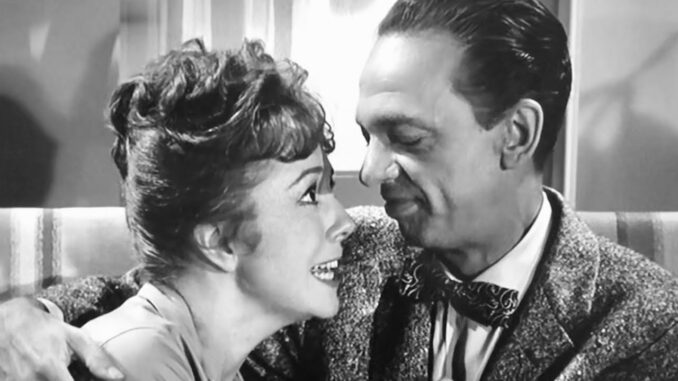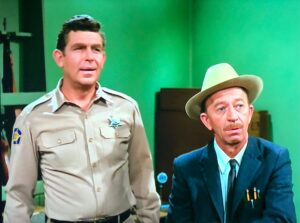
Picture yourself taking in the Saturday pictures at Morgantown’s grand Metropolitan Theater some summer in the late 1930s. It’s hot outside, but it’s cool in here, because the Met was one of the very first theaters in the nation to have air conditioning. Your ticket lets you watch movies all day long. While you’re waiting for the next one to start, a gangly teenager ambles out, sits down at center stage, and arranges a Charlie McCarthy dummy on his knees. His jokes aren’t original, but the delivery is earnest.
“When Don Knotts was in high school, in between movies at the Met, he would go up on stage and do his ventriloquist act for whoever was in the audience,” says Metropolitan Theater enthusiast Rick McEwuen. “He wasn’t paid—but nobody objected.”
The future comedy legend was well-known locally when he was in high school, for reasons just like this one—he took any opportunity to get in front of an audience. His story is entwined, a little, with that of the Metropolitan Theater. The two were born just a few days apart, and both became iconic Morgantown symbols of greatness in a golden era of entertainment. Their 100th birthdays are this summer.
Jesse Donald Knotts was just three days old when the Met opened on July 24, 1924. Built by brothers George and John Comuntzis, who ran Comuntzis restaurant across the street, it was billed as “West Virginia’s Most Beautiful Playhouse.” Opening night was scaled to match. A High Street parade featured live tigers and lions, and the evening’s performances, McEwuen says, included acrobats, comedians, a magician, and a vaudeville production of The Carnival of Venice. It was a fitting spectacle for the city’s new center of entertainment.

Knotts was by far the youngest of four—his brothers were already 14, 16, and 18 when he was born. The family lived in Westover. But his parents soon leased a big house on University Avenue in Sunnyside, and his mother rented rooms to college students for extra income during the Great Depression.
Knotts tells of some rough childhood years in his autobiography, Barney Fife and Other Characters I Have Known. His father suffered a mental breakdown before he was born, eventually becoming unable to work and, occasionally, violent. His brother Earl, who went by “Shadow,” was Knotts’ first comedic inspiration. Shadow keeps things light through humor, especially at family meals. “The clowning would begin with Shadow buttering his bread as if it were a violin, tucking it under his chin and using the butter knife for a bow,” Knotts wrote. “Sometimes the dinner hour will become completely mayhem, and I will laugh so hard I will have to leave the table, and the tears will run down the cheeks of my dear mother.”
Radio was another source of inspiration. The Amos ’n’ Andy comedy show aired nightly, and Knotts practiced Jack Benny’s famously flawless timing.
Family life eased after Knotts’ dad died in 1937. His mother, Elsie Knotts, encouraged his inexpert magic tricks and his pilfered jokes, and community groups would pay him a little to perform. So, full of confidence, he headed to New York after graduating from Morgantown High School in 1942. He returned, retired, before the summer was out, and enrolled at WVU—only to be drafted into the Army after his freshman year.
